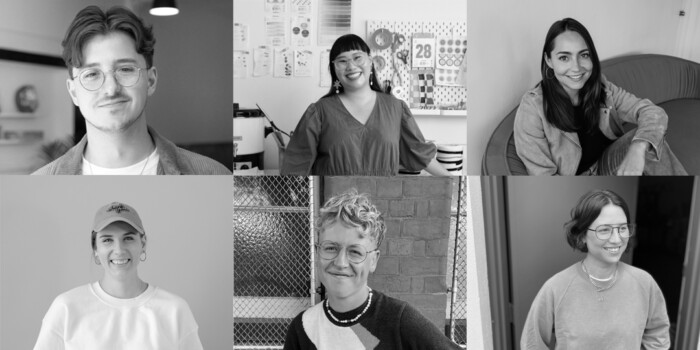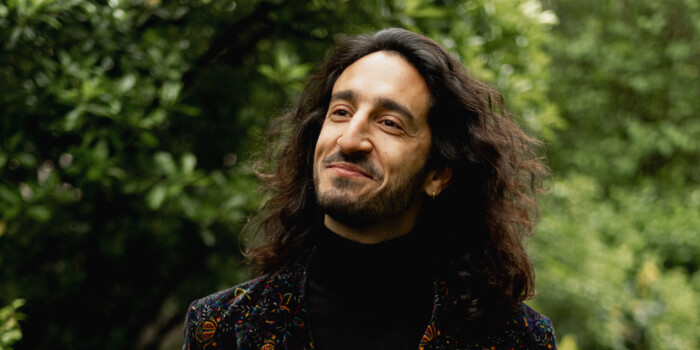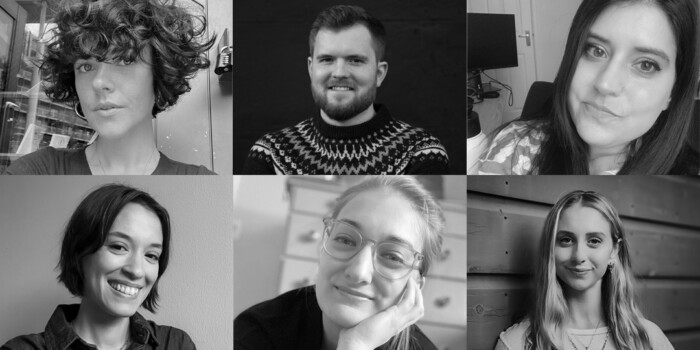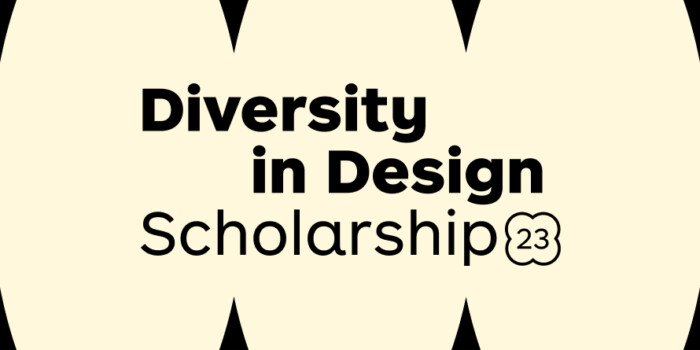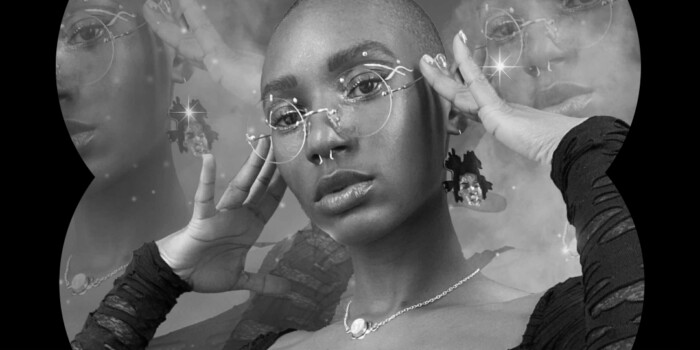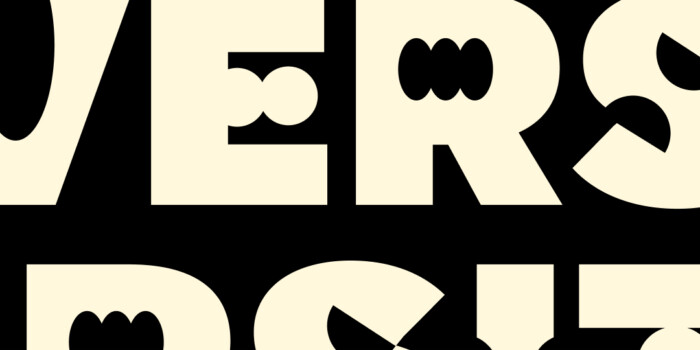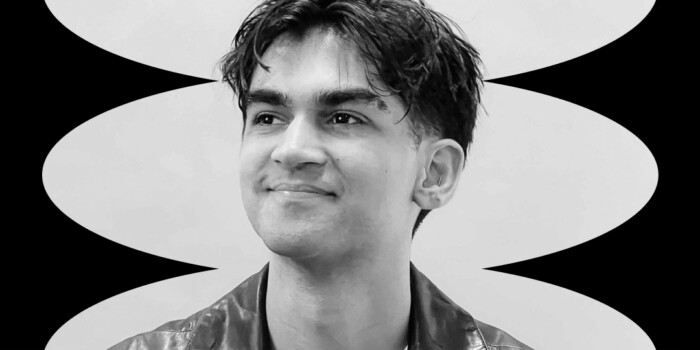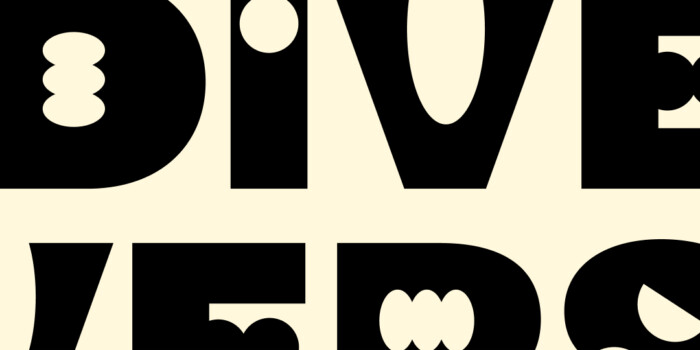Interview with Martin James Power and Steve Waring, Founders of Ensemble

Martin James Power and Steve Waring met a few years ago when they were both teaching part-time at Shillington Manchester. Finding themselves to be two kindred spirits, with a similar ethos and approach to design, they began to collaborate. Two years ago, these collaborations turned in to Martin and Steve starting their own studio, Ensemble, specialising in design and brand strategy.
We caught up with Martin and Steve just after Martin had finished his last term teaching at Shillington Manchester to talk about why they decided to open a studio together, their tips for standing out in a first interview and the benefits of hiring a Shillington graduate.

The two of you founded Ensemble two years ago, in 2017. Can you tell us about the story behind it? Why did you want to open your own studio?
Martin: Ensemble, as a studio, grew very organically. Steve and I were both working independently and teaching separate part time classes at Shillington Manchester—which is how we met. We got talking about the need to find a studio space and began to collaborate on a few projects together.
Ensemble was a bit of a pseudonym I’d used previously with some other collaborators on a few other projects, so it made sense to go under that name. It was that flexibility and collective model that was the perfect fit for how we started out and enabled us to work on a wide variety of projects and deliver across lots of mediums.
Whilst we’re no longer the larger collective, we still use the model as a way to scale and respond to different briefs. This allows us to work with people from all different roles within the creative industry—copywriters, animators, developers, fabricators, even furniture makers.

Steve: After working at a few agencies for over a decade prior, it was time to take those learnings and do it our way–our process, mentality and ethos. It was (and continues to be) a learning curve, more-so the logistics and operational side, but it was a natural step.
I’ve freelanced at a few agencies over the years prior and thought ‘I wouldn’t go about X like that’, and so the only way to have your own way is working directly with clients.
What kind of work does Ensemble undertake? Can you tell us about some recent projects?
Martin: We’re a brand strategy and design studio, which basically means we work on anything from the inception of new brands, to developing comms for existing brands and rolling out campaigns across a range of mediums. We’ve built a network that allows us to deliver from start to finish.
Take the Hilton House project, we worked on that to develop the core idea for the refreshed brand, and then worked with a whole host of people to make sure it ran through everything, from writing the brochure and building the website, to directing the architectural visualisations, commissioning photography and bespoke artworks, running the social media page and even installing the 108 metres of hoarding.

Steve: We will work with anyone, of any size and in any sector (within reason) that resonates with what we do. A big question when taking on work is: ‘is the client going to be receptive to push things?’. We were quite lucky in the fact that our first job under Ensemble was one where the client came and said ‘I’ve seen some experimental stuff you’ve done, we want to go that way’. It was a nice way to set a marker down as there was a spin off of work from that client being open to challenging things.
That all said, not every project is revolutionary—it doesn’t need to be—but the working relationship always has to be good, otherwise it’s just painful for everyone.

Can you tell us about Ensemble’s process? How do you go about tackling a clients’ brief?
Steve: In short, ideas then execution. Pictures and words with an interesting slant or angle. Insight with instinct. The initial stage is probably the most crucial, you get that part right, get the client on board and aligned with thinking and nothing, in theory should be a nasty surprise beyond that.
Martin: We believe firmly in understanding the clients problem and landscape as much as we can before we even start designing. This allows us to translate what, how and why they do things into, what we call, a ‘catalytic idea’, which then informs how they look, sound and connect with their audience.

Martin, you’ve just finished your last term as a part-time teacher at Shillington Manchester, and Steve, you used to be one too! How has teaching has developed your own design skills?
Martin: I wouldn’t say it’s helped my personal design skills but it’s helped me develop in other ways. I started teaching to try and improve my hands off direction, in previous roles I was too quick to take over and push the work to where it needed to be, that’s not something you can do with students, you need to nurture them so that they produce their own strongest work, not yours.
It also keeps you honest about what and why you do what you do.
If you’re talking to students all the time about work having a meaning, a core thought, then you can’t then go away and sell a half arsed thought to your clients.
Steve: I learnt a few new tricks in the programmes, but the main thing is interacting with people—realising people are different, with different personalities who work in different ways. To try and take the blinkers off and appreciate new ways and perspectives.

You’ve also recently hired a 2018 Shillington Manchester graduate, Juan Villascusa. How have his first few months at Ensemble been?
Martin: Pretty interesting. He’s brought a different approach from ours which is crucial. We don’t want to create a studio of clones.
Steve: He didn’t go down the traditional education path; first working as an artist and then studying at Shillington. There is a really interesting blend there—the abstract work he does, mixed with a love of typography, order and structure. Culturally, it’s a great fit.

From your first hand experience, what are the benefits of hiring a Shillington graduate?
Martin: There are a few benefits to bringing Shillignton students in, whether hiring them or on an internship. Firstly, they’re more aware of the pace of a studio—a couple of days for a brochure is normal, when I was at uni I was used to 12 weeks for logo and that doesn’t happen in the real world.
Secondly, you know that they’re taught to focus on ideas over decoration. Anyone with a Mac and access to the internet can learn how to make things look good, but for your work to really connect it needs to be built on a strong idea and conviction.
Steve: The ‘industry-ready’ element is a massive plus. I’m a huge advocate of the Shillington course as, amongst other things, the people studying there are serious about it.
People have left previous career directions, want to try something new, or sometimes felt they missed their calling, and the hunger is infectious.

What does the future look like for Ensemble? Where do you hope to be in, say, five years time?
Martin: In all honesty, we don’t know, and that’s the exciting thing. We’re growing, much faster than we ever expected to, which is great, but we’re not going to sit here and say we will be a team of 30 in 5 years. We just want to keep delivering great work and working with exciting clients. The rest will take care of itself.
Although, finishing our own website would be good.
Steve: We just want to organically progress. I think we are both quite hands on so don’t want to give up the tools, which will probably impact on the way we move forward. The first two years have been great—working with new people and techniques that have kept things interesting and us enthused. We both talk about experimental and self-imitated work a lot, so getting a good blend in that regard is something I’d hope we are closer to achieving.

Manchester is an amazing city—with loads constant going on. What great things are happening in the city? Where do you go for inspiration?
Martin: Manchester is really exciting now. Everywhere you go there are little independent agencies doing different work. There’s a pretty strong community feel too—not in a lovey-dovey hand-holding way, but everyone knows of each other and appreciates that there’s more than enough work to go around.
Theres a talk, exhibition or event on nearly every week, which is great, but we’re not the best at getting to them as we’ve got young families.
Steve:
It seems every corner of Manchester is changing or developing. It’s quite amazing really.
In terms of recommendations, the first place that came to mind was The Whitworth Gallery. The second—NQ64, a retro games arcade in the Northern Quarter (I guess you can take inspiration from anywhere)!

How can young designers make themselves noticed? Have you got any tips for standing out in a first internship or job?
Steve: A different take. Someone that may deviate from the norm or expected. The fundamentals are also important—type skills and good attention to detail etc, but someone that shows a pro-active nature, that maybe goes beyond what was asked and that shows a willingness to soak up and progress.
Martin:
If you’re passionate about design and creativity outside of the studio then it will show in your day to day.
Making music, art, type design or just doing more independent work will all develop your skills and progress your career quicker.

Give us five words that sum up Ensemble and the studio’s creative style.
Steve: Pictures, words, insight and instinct.
Martin: What Steve said!
Huge thanks to Martin and Steve for chatting to us about their time at Shillington and what Ensemble is all about—we look forward to having them back to campus soon. Make sure to follow them on Instagram and check out their website (if they ever finish it) to see all their work!
We’ve hosted some of the world’s top creatives, design studios and advertising agencies at Shillington. Check out more interviews from guest lecturers.
Want to win some amazing prizes and stay in the loop with all things Shillington? Sign up to our newsletter to automatically go in the draw.
